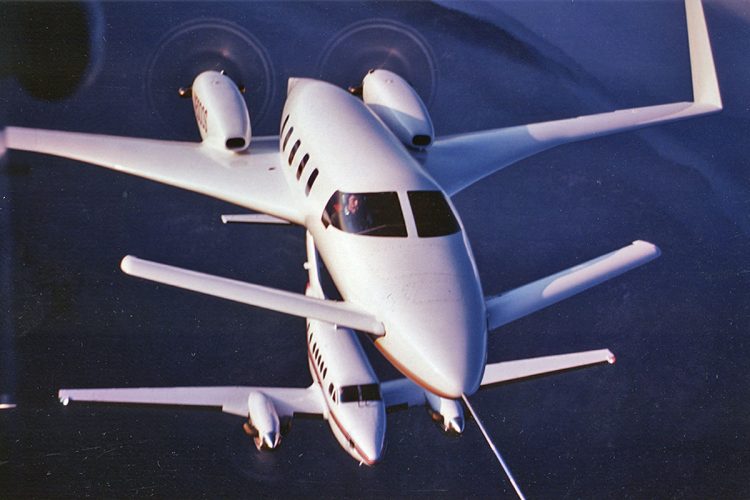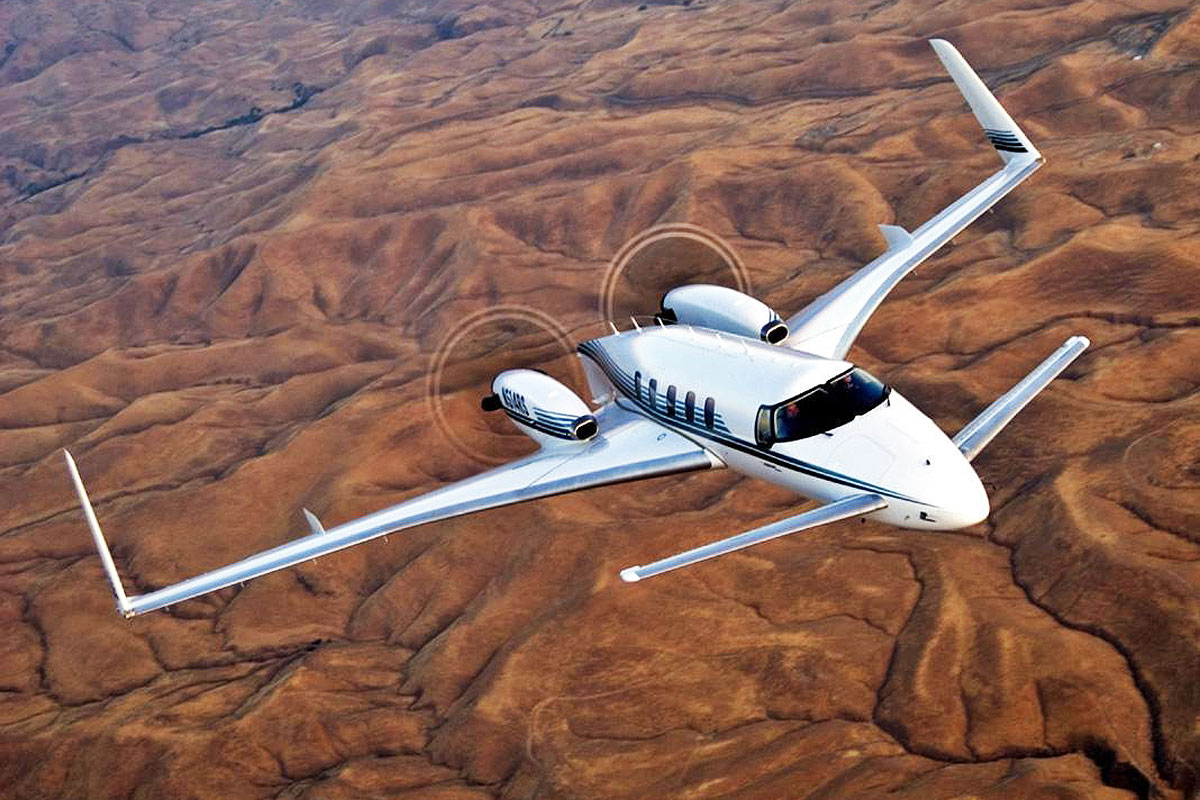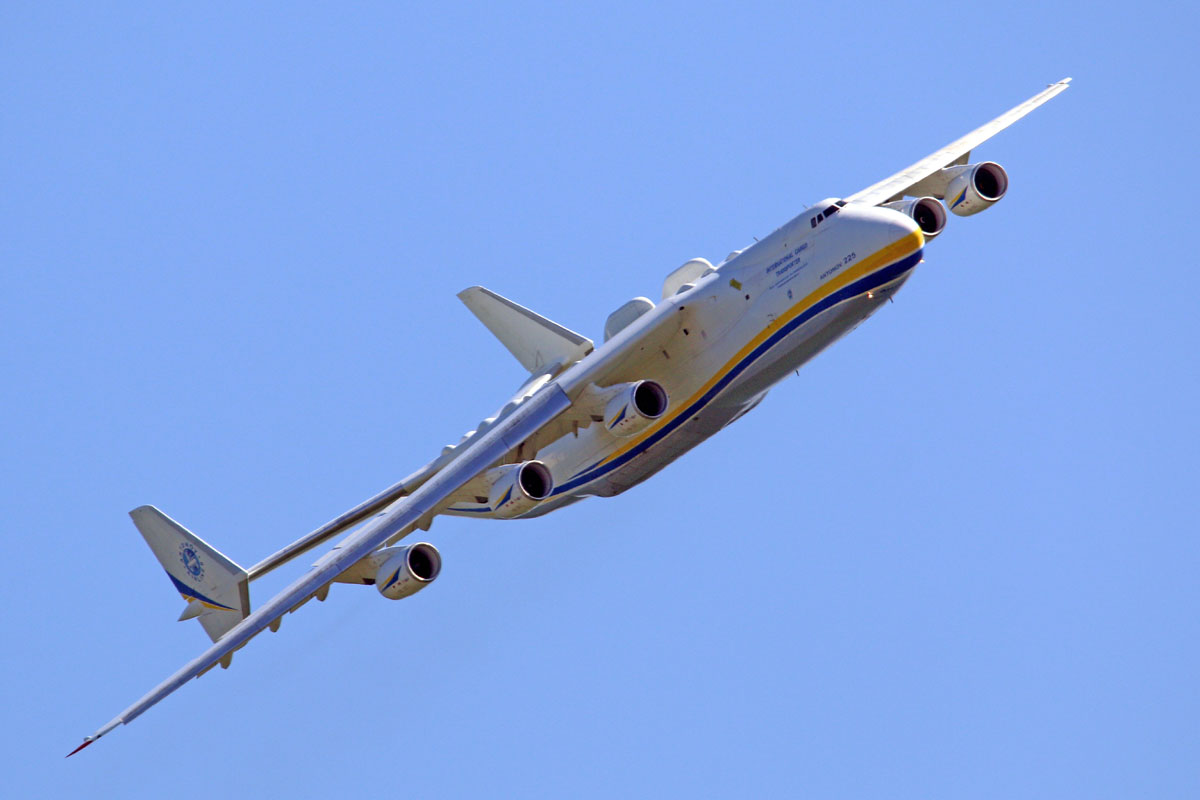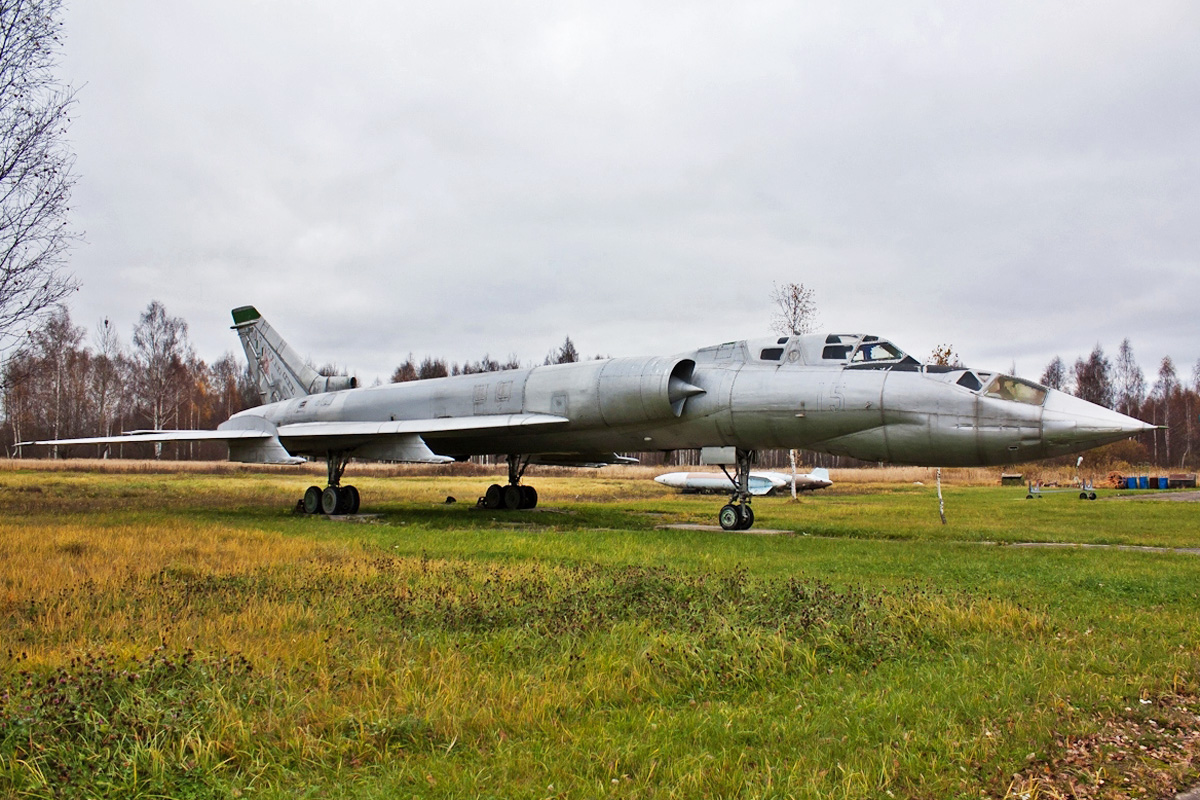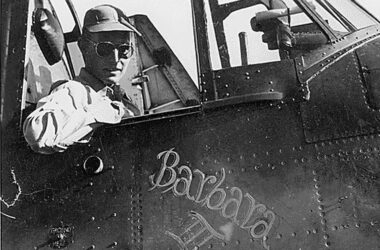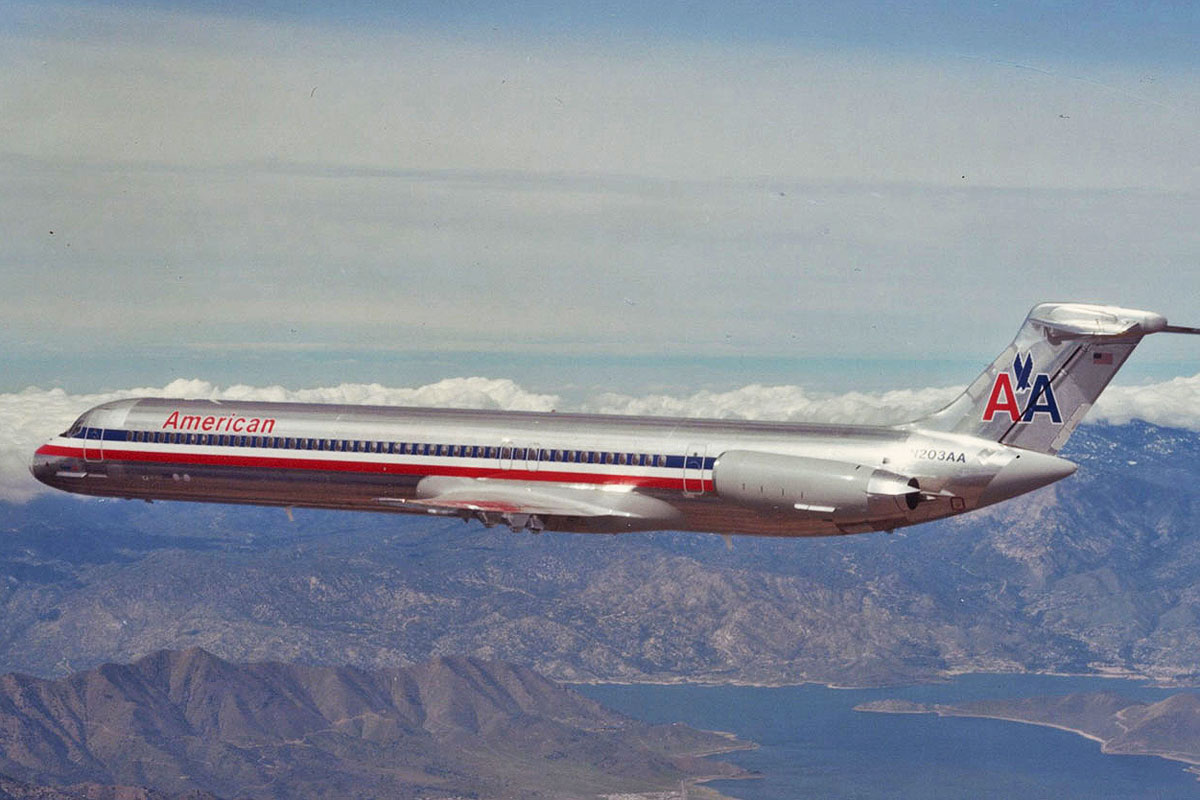In the history of aviation, there are countless aircraft that were huge failures, many of them more than justified, but there are also many brilliant projects that have turned into a bad idea. Among the most emblematic cases is the Starship, an executive turboprop that Beechcraft launched in the mid-1980s.
Leader in this segment thanks to the successful King Air, Beech had all the conditions to launch its successor, but managed to spend millions of dollars on an aircraft that promised a lot and in the end it delivered almost nothing.
The Starship had an exotic design, with canards, vertical stabilizers on the tips of the wings and “pusher” propellers. The attentive ones will notice that its look resembles another classic, the small Vari-Eze, a plane sold in kits by the company of Burt Rutan, creator of dozens of models including Virgin Galactic’s White Knight Two, and the giant Stratolaunch, aircraft with the largest wingspan in history.
It was, therefore, a partnership between a giant in the general aviation market and a brilliant designer. What could go wrong? Everything, but before understanding the reasons for the resounding failure of the Starship, it is worth understanding the context of the time.
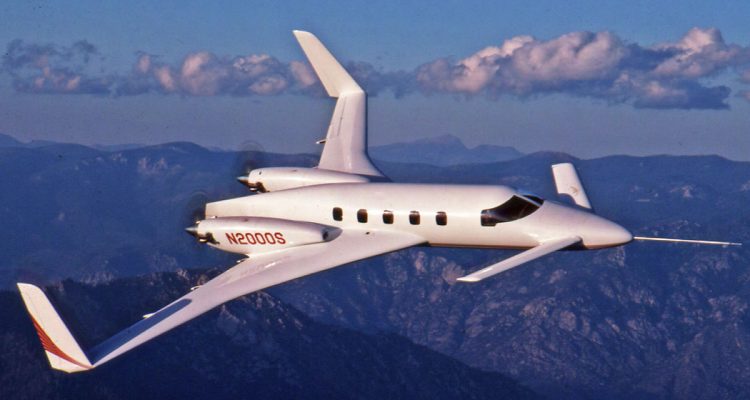
Rayheon
Founded in 1932 by Walter Beech, Beechcraft was one of the most well-known US planemakers, having launched several popular models like the Bonanza, which debuted with its unmistakable “V” tail shortly after the end of World War II.
In the 1960s, the Wichita-based company launched King Air, a twin-engine turboprop that would become popular at almost all airports worldwide. The formula for success was based precisely on its simplicity, a conventional and predictable aircraft.
The company led the market with King Air when in 1980 it ended up being sold to Raytheon. During that time, the oil crisis showed that turboprops would have a huge advantage over jets because of their lower fuel consumption.
Beech had already started studies for an aircraft that could not only replace the King Air but also offer superior performance and a lower operating cost. To achieve this goal, an innovative proposal would be needed, something Bill Lear, the creator of Learjet, had already tried with Lear Fan, a twin-engine turboprop with only a set of pusher propellers and a Y-tail. The prototype flew on January 1st, 1981, but Lear had already passed away two years earlier and the program ended up being canceled.
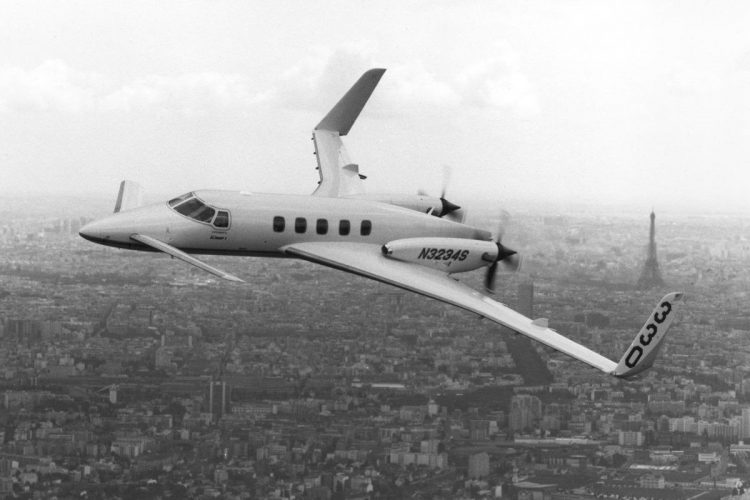
The Lear Fan, however, brought an innovation, the airframe built in composite, a technique that was beginning to become popular in general aviation. It was precisely for this reason that Beech approached Burt Rutan, then a young designer of homebuilt airplanes. His models are known for the canard configuration with pusher propeller and fiberglass construction. The Beechcraft design team started drafting configurations, but it all stopped when Raytheon, then an electronics company, took over the manufacturer.
Only in August 1982, the Starship project started to become a reality. The new plane promised to revolutionize business aviation by flying at 400 mph, carrying 10 passengers and weighing less than 12,500 pounds, which would make it faster and more capable than King Air.
By adopting carbon fiber in its construction, Beechcraft hoped to reduce its weight and thereby gain in performance, something that the “pusher” propellers would help a lot since in this configuration the performance gain is great compared to the frontal position. In addition, the Starship would be silent, thanks to the distance of the fuselage engines, and balanced, which means a smoother flight, like business jets.
Internally, the new plane also innovated with the first glass cockpit of its category, a Rockwell Collins avionics suite with 16 EFIS displays in place of analog instruments – at the time, interchangeable EFIS screens did not yet exist.
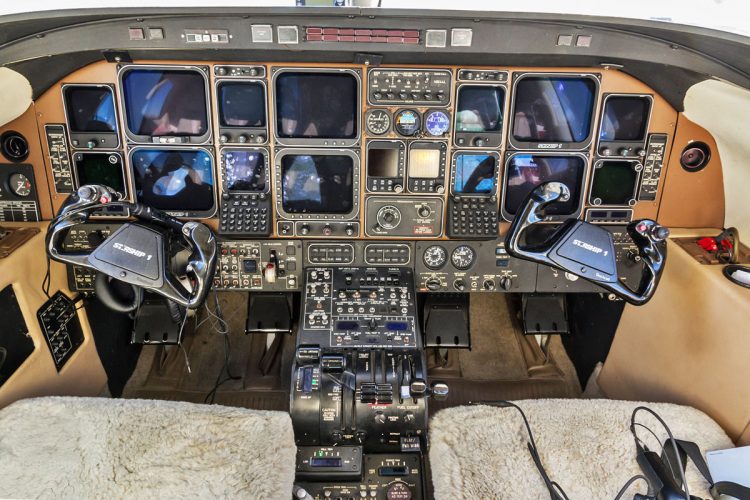
Poor performance
To prove the feasibility of the project, Beech hired Scaled Composites, Rutan’s company, which started assembling a prototype with 85% of the size of the final project. Without pressurization and much of the planned construction and equipment concepts, the experimental aircraft flew a year after the program began in August 1983. Its configuration resembled the Vari-Eze too much, but on a larger scale. Instead of a traditional tail, the Starship had a dorsal fin and canards that could be sweeped.
This configuration already foreshadowed some problems with the project. Like Rutan’s small homebuilt plane, which needs to retract the front landing gear on the ground, the Starship had its center of gravity too far back due to much of the weight of the engines and wings being well away from the fuselage. The solution to balance the aircraft was to design large sweep wings to allow the canards to have their angle changed in certain flight regimes.
However, these changes resulted in weight increase, reducing part of the gain from carbon fiber. Instead of keep below 12,500 lbs, the Starship was close to 15,000 lbs, thanks also to a complex system to prevent the plane from stalling. To deliver the promised speed, Beech had to equip the turboprop with a more powerful version of the PT-6 engine, with 1,200 shp instead of 750 shp, increasing fuel consumption. In addition, two seats were lost, leaving eight seats on the plane.
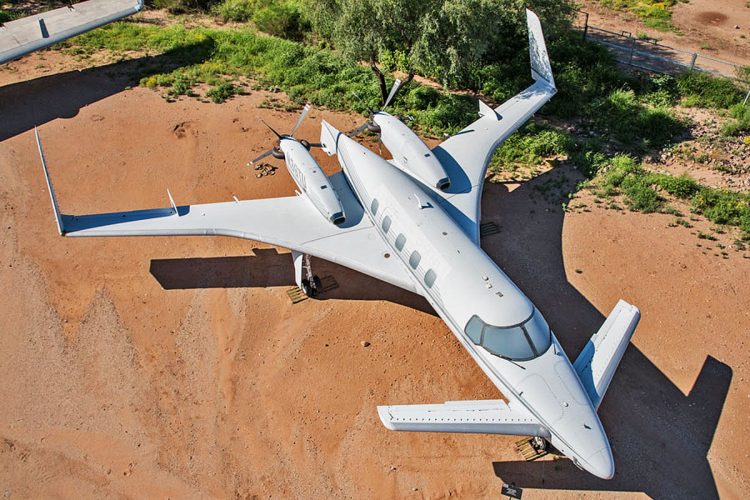
The difficulties, however, were more extensive. The futuristic cockpit, for example, has become an immense headache to keep countless screens reliable, requiring a cooling system verging on perfection. Beech also struggled to establish series production of an airplane with a fuselage in composite material, something new at the time and which required spending a huge sum of money.
Even when it had only the conceptual Starship assembled by Scaled Composites, Beechcraft tried to find customers for the Starship, but the contrast between the strange plane and King Air scared the market. The price doubled between the first flight of the prototype in the final configuration (February 1986) and its certification by the FAA (1988).
Winds of change
After investing an unreal sum in the project (estimated at $1 billion), Raytheon still insisted on offering the Starship in the business aviation market, but only managed to close 11 purchase orders until 1991. In that period, smaller and more efficient executive jets arrived with a cost practically the same as the turboprop. Not even his promised unbeatable performance remained – rival Piper Cheyenne was as fast as the Starship without needing such an exotic design.
The first aircraft was delivered in 1989 during the Paris Air Show, in France, but it had so many problems that it was called “hangar queen”. With low demand, reinforced by good sales from King Air, Beech started offering Starship to customers through leasing in 1991.
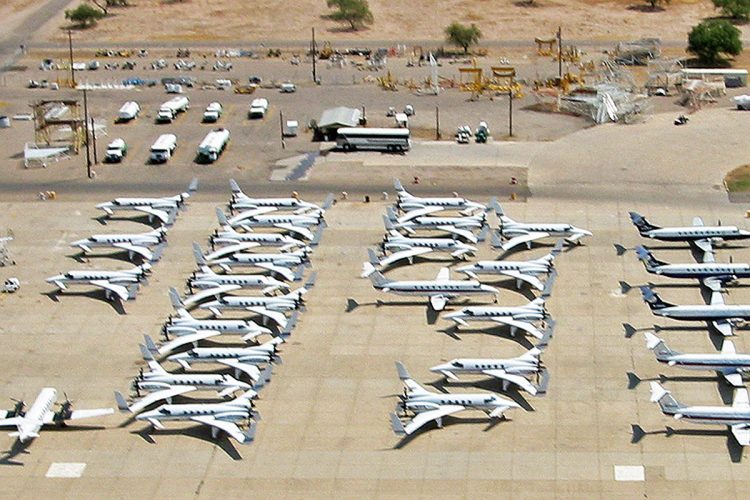
Even so, the unusual turboprop was unable to expand its sales and just seven years after its certification, the manufacturer completed its 53rd and final model in 1995. It seemed like the end of a sad story, but the “ghost” of the Starship continued to pursue Beechcraft until 2003, when the company decided to dismantle the small aircraft fleet due to its high support cost. The Kansas planemaker bought most of the units, separated some aircraft to send to museums, incinerated the reimaining and sold the parts left in its inventory to the few customers who refused to give up their turboprops – the company still even offered the Premier I jet to replace it.
Celebrity
Despite the numerous setbacks of its career, Beechcraft Starship 2000 collected admirers during this period. There are owners of the plane that keep it flying, but it is believed that only five aircraft continue to operate today. Its unusual shapes attract enthusiasts wherever it goes and there is even a curious story about the crew of a B-2 bomber, as exotic as the turboprop, flew up to a Starship to photograph it. Whoever piloted the turboprop also only has praise for its stability and silence on board.
Raytheon’s adventure with historic Beechcraft ended in 2006 when it sold its aircraft division to Goldman Sachs, which renamed the company as Hawker Beechcraft. After going bankrupt in 2012, the manufacturer was then transferred to the Textron group, owner of Cessna, one of Beech’s biggest rivals. Ironically, the creator of Starship manufactures the classic and conventional Bonanza, Baron and King Air until today. Long live the King!
